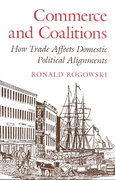Answered step by step
Verified Expert Solution
Question
1 Approved Answer
Suppose that the countries of the European Community (UK, Germany, France, Italy, etc.) stop all government subsidies for investment and eliminate all investment tax credits.
- Suppose that the countries of the European Community (UK, Germany, France, Italy, etc.) stop all government subsidies for investment and eliminate all investment tax credits.
- 1. Fully explain the immediate impact of such a change on the following variables:
- world real interest rates; U.S. real interest rates; investment in the U.S.; the current and capital accounts in the U.S.; and the real and nominal exchange rate measured as Rest of World Currency per U.S. dollar.
- 2. Explain the dynamic effects of such a change on the U.S. economy. What happens to real output growth and the level of real output in the long run? Why does real output change if there is no change in national saving
- 3. Robert Reich recently suggested that the U.S raise its minimum wage from $4.25 per hour to $4.75 per hour. Others in the Clinton administration have suggested that the minimum wage be increase to $6.00 per hour. Briefly discuss the advantages and disadvantages of such a policy.
- 4. Write down the quantity equation and explain it. What does the assumption of constant velocity imply about the inflation rate?
- 5. From 1929 to 1933, the nominal money supply in the U.S. fell 25%, and the unemployment rate rose from 3.2% to 25.2%. At the same time, the price level fell approximately 25%, and nominal interest rates declined continually. Are these data consistent with the hypothesis that contractionary monetary policy caused the Great Depression? Explain.
- 6. If Germany has low inflation and Italy has high inflation, what will happen to the exchange rate between the German mark and the Italian Lira?
- 7. In the general equilibrium model of chapter 3, Mankiw assumes that consumption is a function of disposable income alone: C = C(Y-T). Modify the consumption function to make consumption depend on both after tax income and the level of real money balances (M/P) consumers hold (The assumption is that real balances are a part of wealth, and wealth affects how much we consume). Show that if money demand (the demand for real balances) depends on the nominal rate of interest, then an increase in the rate of money growth now affects consumption, investment, and the real interest rate.
- 8. Write down the fundamental equation of growth from the Solow model. Explain how
- the saving rate and the rate of population growth affect the steady-state level of income, and the steady-state rate of growth. What determines the steady-state rate of growth of income per worker? Does the Solow model fully explain the factors that determine steady-state growth in income per worker?
- The newspaper reports that the nominal interest rate is 12 percent per year in Canada and 8 percent per year in the United States. However, arbitrage ensures that the real rates of interest in the two countries are equal.
- 1. Using the Fisher equation, what can you infer about expected inflation in Canada and the United States.
- 2. Assuming purchasing power parity holds, what can you infer about the expected change in the exchange rate between the Canadian dollar and the U.S. dollar?
Step by Step Solution
There are 3 Steps involved in it
Step: 1

Get Instant Access to Expert-Tailored Solutions
See step-by-step solutions with expert insights and AI powered tools for academic success
Step: 2

Step: 3

Ace Your Homework with AI
Get the answers you need in no time with our AI-driven, step-by-step assistance
Get Started


